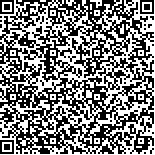下载中心
优秀审稿专家
优秀论文
相关链接
摘要

系统介绍了嫦娥三号遥操作中基于影像的遥感制图与导航定位技术的应用方法。利用降落相机序列影像实现了嫦娥三号着陆器在嫦娥二号卫星影像上的高精度定位,并生成了着陆区高精度3维制图产品;利用导航相机立体影像生成巡视器周围地形产品,采用站间影像匹配定位和DOM匹配的方式实现了玉兔号月球车的连续高精度定位;将高精度的定位结果和制图产品应用于月球车遥操作任务规划中,为月球车的安全行驶和科学探测提供了精准的定位和3维地形信息。月球车月面巡视探测工作的顺利完成,验证了这些应用技术的可靠性。
China successfully landed Chang'e-3 (CE-3) lander and rover on December 14, 2013, and the rover Yutu had traversed 114.8 m and accomplished a series of scientific investigations under teleoperation. To fulfill teleoperation requirements, the techniques of remote sensing mapping and localization based on images have been developed and used to produce high precision topographic and rover localization products. These techniques and derived products are critical to support teleoperation tasks such as obstacle avoidance and rover path planning.Based on consecutive image registration between CE-3 descent images and Chang'e-2 (CE-2) Digital Ortho Map (DOM) (1.5 m/pixel), the CE-3 lander has been localized on high-resolution lunar orbital and descent images. A sequence of descent images are firstly selected at intervals from 2 km altitude, and then the geometric relationships among the selected sequence images are established through SIFT matching. Lunar craters are subsequently extracted by image segmentation with mean-shift method and then applied to registration between CE-2 DOM and the descent images. The landing point of CE-3 is finally localized in CE-2 DOM and a Lunar Reconnaissance Orbiter (LRO) image (1.6 m/pixel) acquired before CE-3 landing.High-precision terrain products covering landing area of CE-3 have also been produced using the descent sequence images. First, image matching among the selected sequence images is performed with SIFT matching, during which gross errors are eliminated by an RANSAC algorithm. Second, the remaining matched points are used as tie points to construct an image network, and bundle adjustment is then performed with ground control points from the CE-2 Digital Elevation Model (DEM) and DOM. Third, dense matching among the sequence images is performed to generate dense matched points, and the three-dimensional coordinates of the dense points is subsequently calculated with space intersection. Finally, the DEM is generated by Kriging interpolation and DOM is generated by back projection.Along the traverse, Yutu Rover acquired stereo images covering 120° field of view using its navigation cameras (Navcam) at waypoints that are about 10 m apart. Epipolar images of the Navcam stereo images are generated and SIFT-based matching is performed among the Navcam images to extract tie points. Block adjustment is then performed to refine the exterior orientation parameters of the Navcam images. Finally, the DEMs and DOMs are generated by the method similar to producing the topographic products from the descent images. These topographic products are used to support path planning at every waypoint.High precision localization of Yutu Rover has been accomplished by cross-site visual localization and DOM matching. Cross-site visual localization is based on Affine-SIFT matching algorithm, which obtains matched points in Navcam images between adjacent sites. Then bundle adjustment is applied to resolve the exterior orientation parameters of image at the present site so that to localize the rover. The DOM matching localization is based on SIFT matching between the DOM derived from Navcam stereo images and the DOM generated previously from the descent images. As a result, the rover position is localized in CE-2 DOM because the DOM from descent images has been registered to CE-2 DOM.The lander localization result based on consecutive registration of descent images is proved very precise (within one pixel) by comparison with a LRO image acquired on December 25, 2013, in which the lander can be directly identified. High precision localization and mapping results based on the descent images and Navcam stereo images have supported path planning and obstacle avoidance during CE-3 mission.These techniques have been routinely used in mission operations of CE-3 and have been proved effective and reliable.

